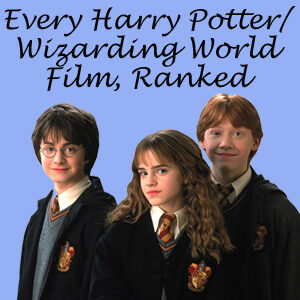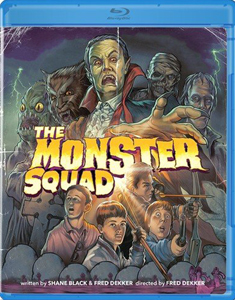Fans of “Stranger Things” who are curious about the influences behind Netflix’s 1980s-set series have probably already seen “E.T.” (1982), “The Goonies” (1985) and “Stand By Me” (1986). But they might have overlooked “The Monster Squad” (1987).
It’s not a huge oversight, as this isn’t a great picture by any means, but certain fanbases might get a kick out of it. In addition to “Stranger Things” fans, connoisseurs of creature effects and aficionados of screenwriter Shane Black might enjoy it.
A step down from ‘Lethal Weapon’
Only his second credit (after “Lethal Weapon,” from earlier that year), “Monster Squad” is a lesser work in Black’s catalog, but it’s an interesting not-quite-failure. It’s essentially “The Goonies” plus the Universal Monsters. Pre-teen viewers might find it scary, and the creature effects – as well as visual effects of time vortexes – are excellent by the standards of the day and they still hold up.
Dracula (Duncan Regehr) and his teammates in mayhem awaken in a small American town. The group includes Frankenstein’s monster (Tom Noonan, later of Black’s “Last Action Hero”), The Wolfman (Tom Woodruff Jr., later the xenomorph in “Alien 3”), The Mummy and Gillman.
The monster’s story is the classic one where he befriends a 5-year-old girl, Phoebe (Ashley Bank, who still acts today). The other monsters don’t have arcs, they just menace the town.
The police and other adults (the most well-known actors are “Napoleon Dynamite’s” Jon Gries and “Roswell’s” Mary Ellen Trainor) don’t believe there are really monsters in town.
Mini monster experts
Fortunately, a bunch of boys around age 12 know more about monsters than they do about science, as their grades and attendance attest. For example, they know that Frankenstein’s monster’s name is not “Frankenstein” (but then everyone calls him that anyway).
The group is led by Andre Gower’s Sean, who wears a “Stephen King Rules” T-shirt. It’s up to this self-proclaimed Monster Squad to stop the monsters by acquiring an amulet and opening a portal.
The way the kids talk – swearing when there are no adults around – seems natural, and we get those evocative Eighties tropes like the treehouse-based club (where no girls are allowed) and transportation via bike.
(Although we can group “Monster Squad” with those other “kids against the world” movies today, I wonder if it seemed a little played-out in 1987, as it comes at the tail end of that pack of movies.)
I wanted more humor from the picture. Initially, there’s a slight sense that Black (who co-writes with director Fred Dekker; they’d later team up again for 2018’s “The Predator”) is sending up the Universal Monsters and gothic horror cliches.
Missed opportunity
But it doesn’t go all-in on that approach, and the tone is ultimately that of a kids’ movie. (Black would go on to effectively satirize the action genre in 1993’s “Last Action Hero.”)

Some dialog feels like it comes from Black’s typewriter, and it’s fun to hear those lines filtered through children’s perspectives: “Where the hell am I supposed to find silver bullets? Kmart?,” one of the kids asks.
“Monster Squad” is a rare Black film that doesn’t chronicle thrown-together partners investigating a case, and it’s a rare entry in his catalog that’s not at least partially set at Christmas. As such, I’m tempted to say this is more Dekker’s movie.
Although the plot is simple, the mechanics of wrapping it up totally take over the final act at the expense of humor and character through-lines.
Things that were kind of engaging at first – like the idea of “Fat Kid” Horace (Brent Chalem) showing up his bullies – become marginalized. Older teen Rudy’s (Ryan Lambert) obsession with a hot girl he’s spying on via binoculars seems like it could lead to something, but it does not.
“Monster Squad” isn’t hard to watch, but it could’ve been much better. Still, I can see why it has a cult following, and it should be on the checklist of “Stranger Things” fans who want to track down all the influences.


